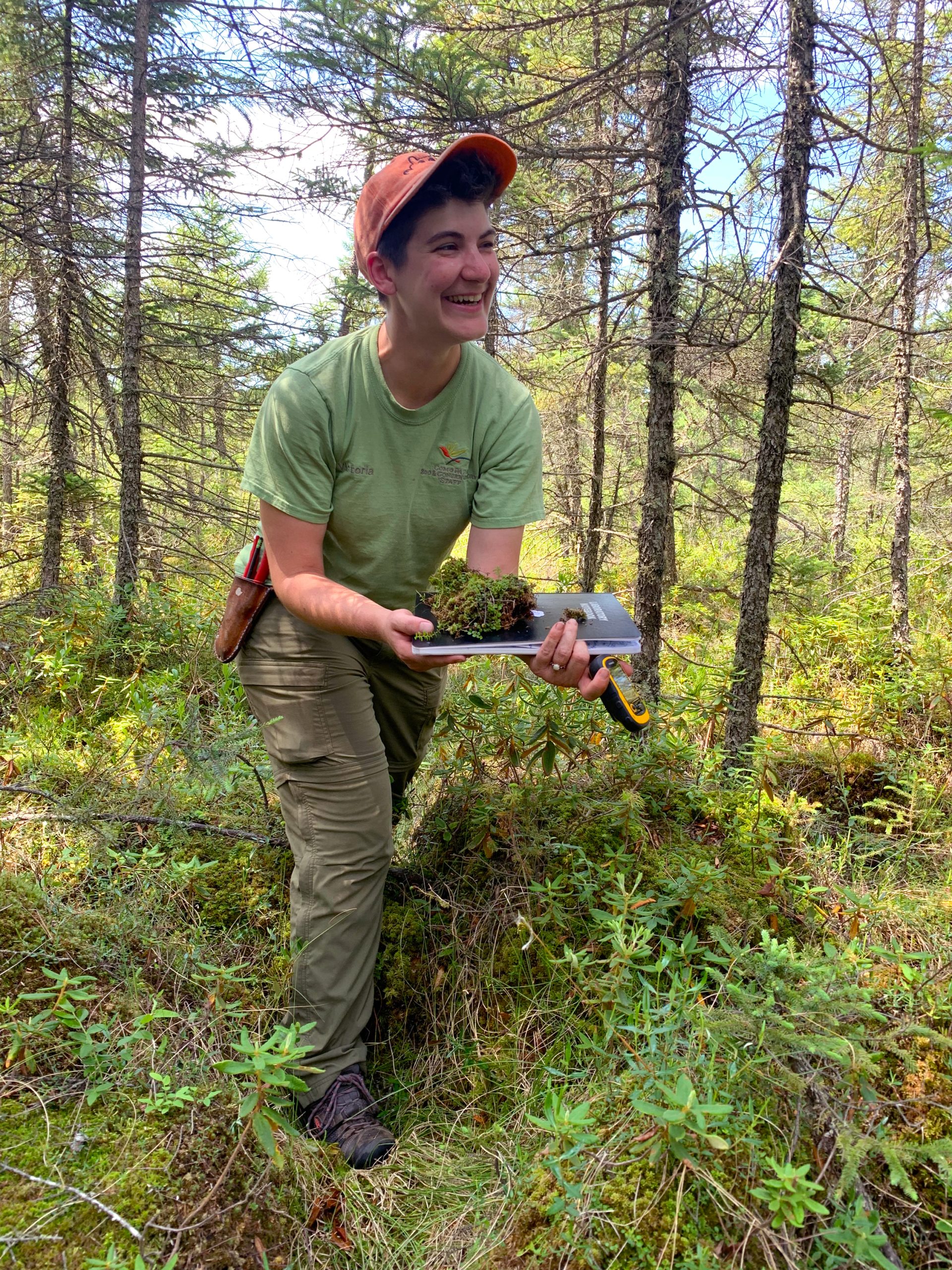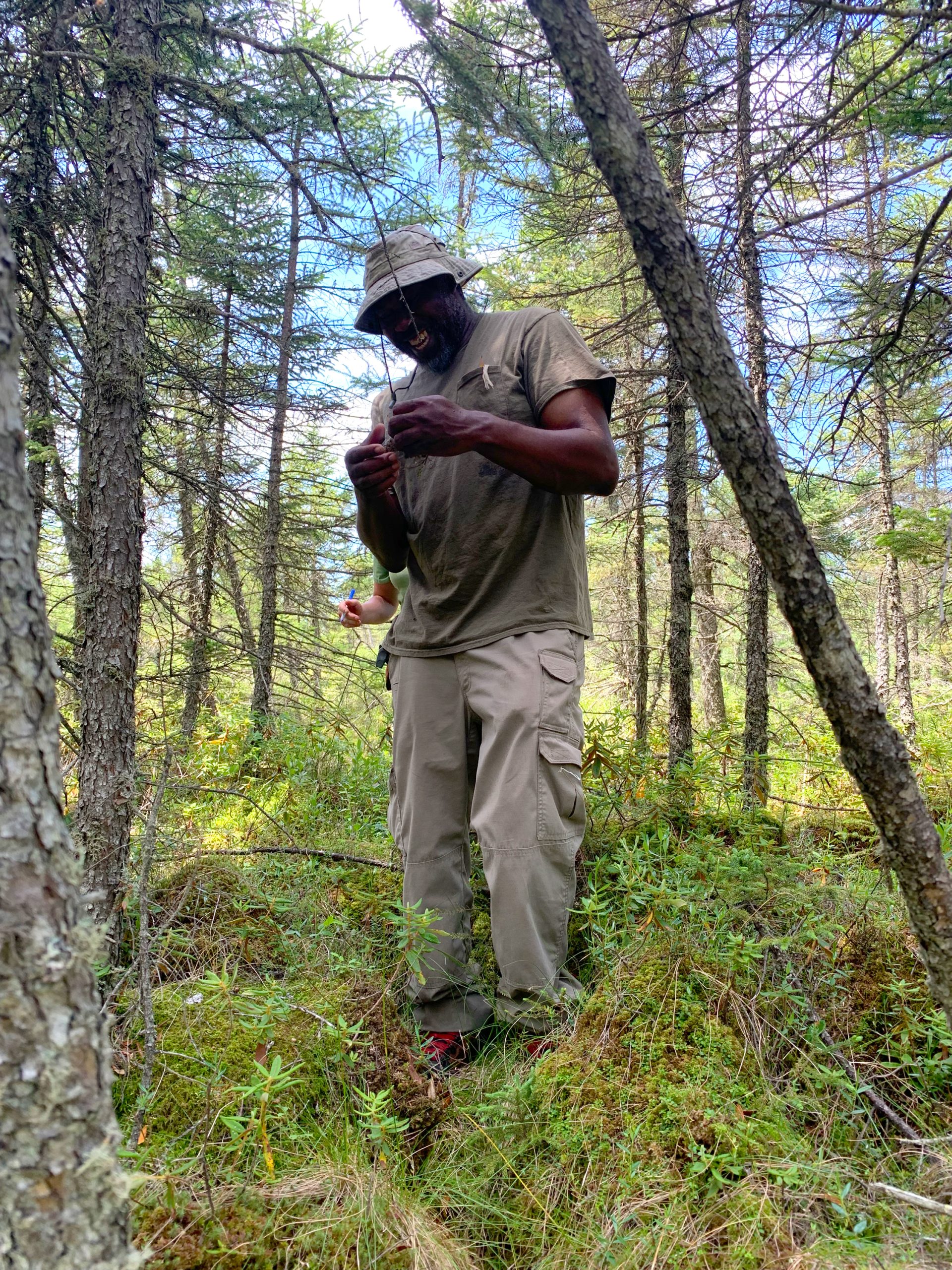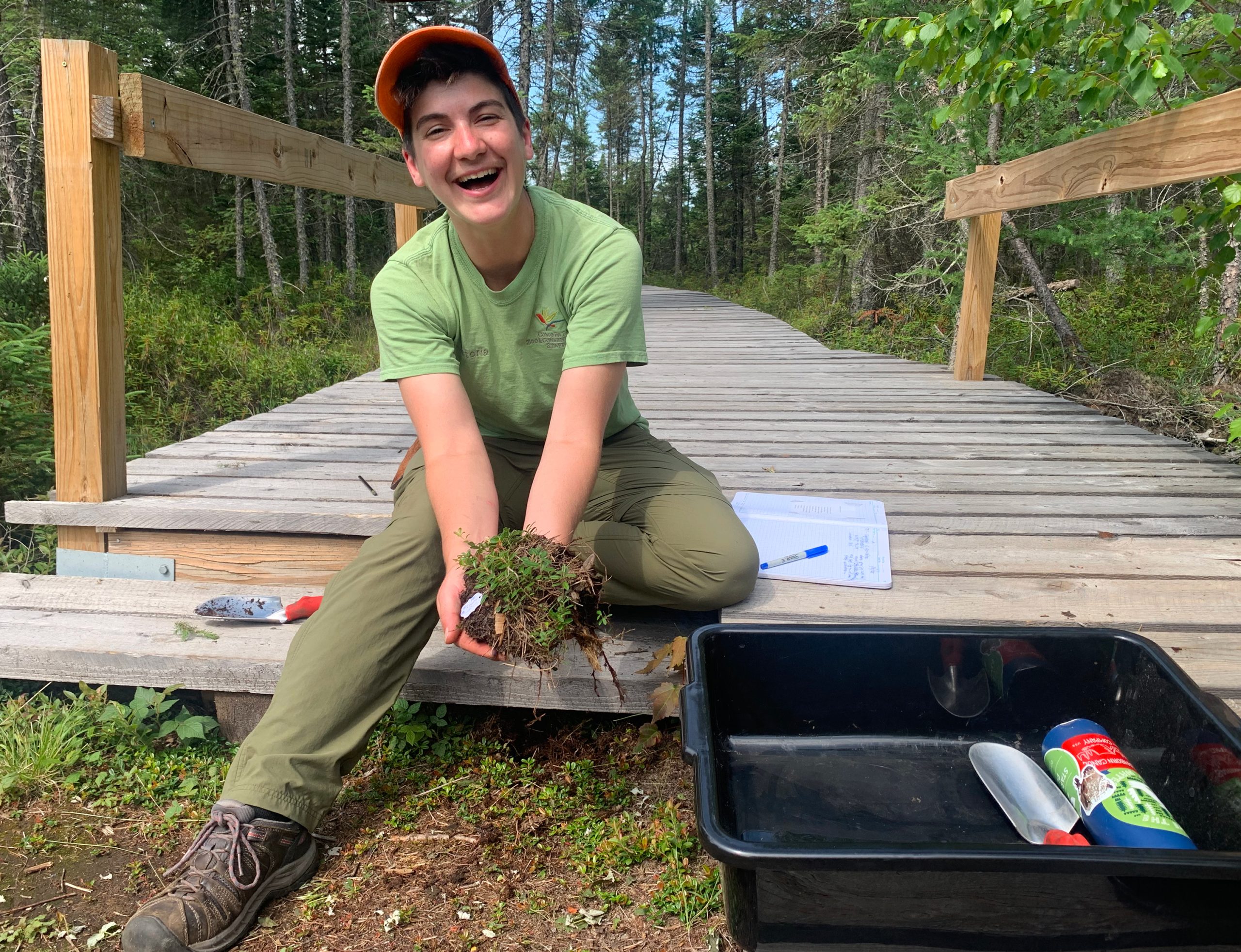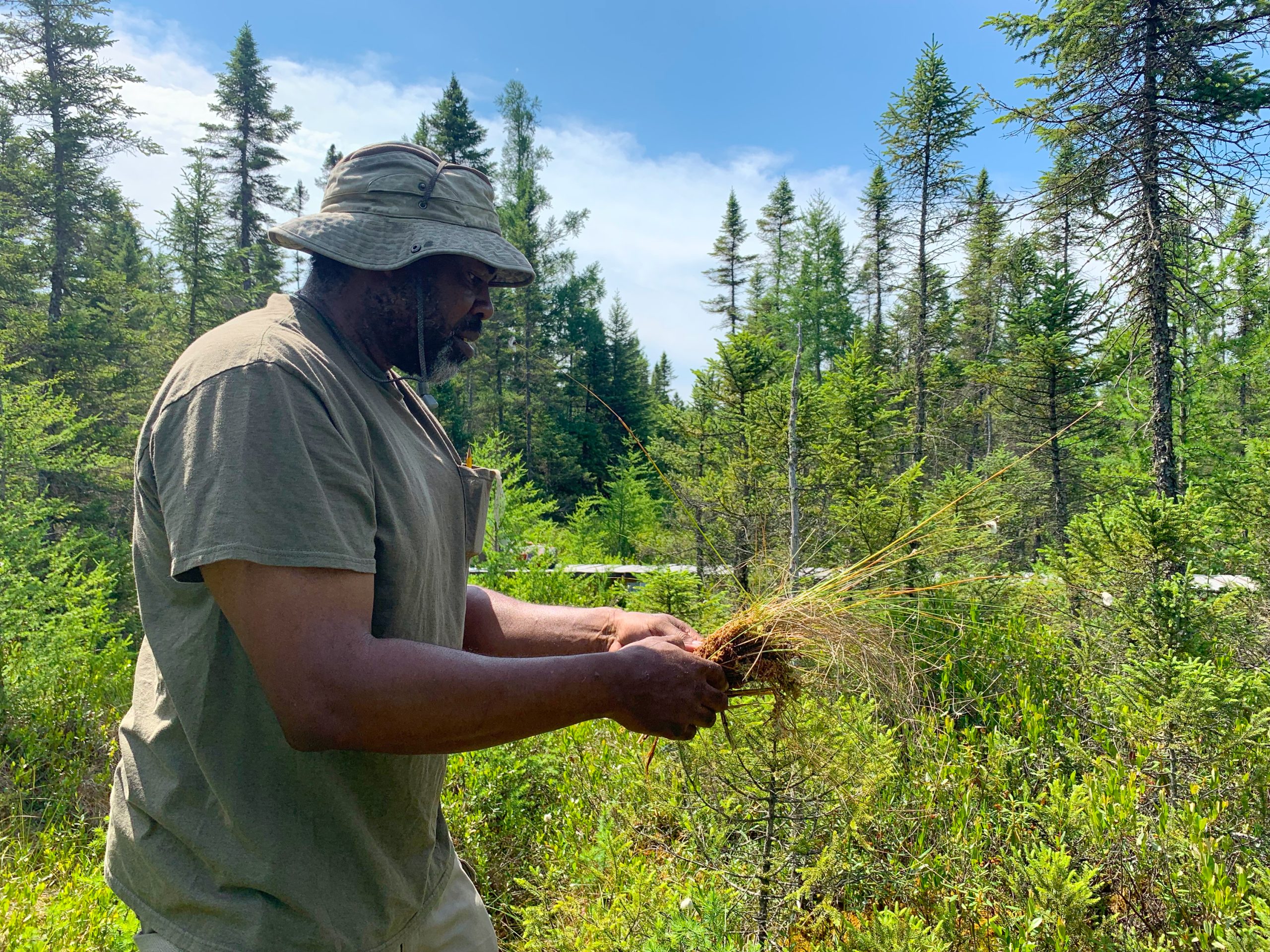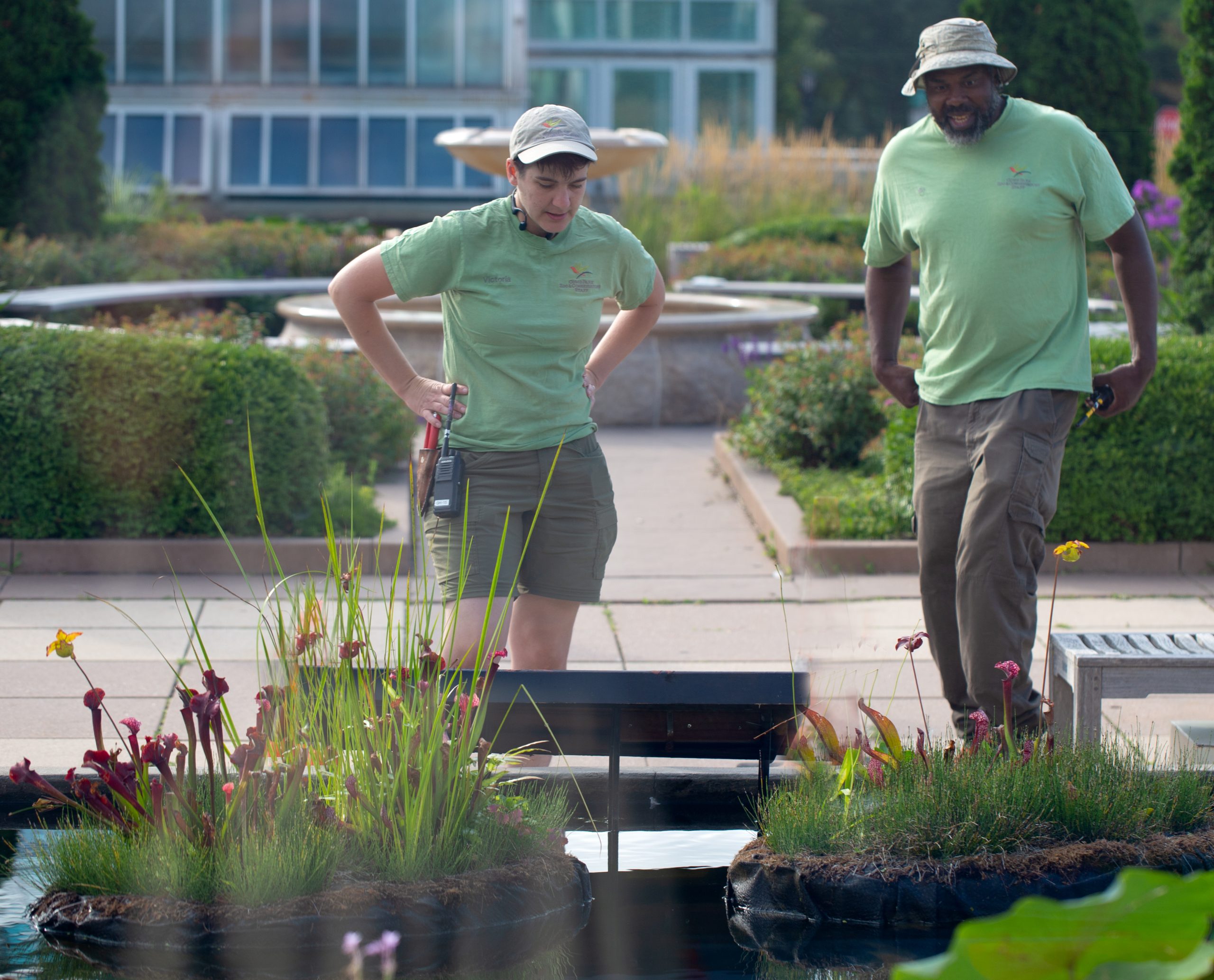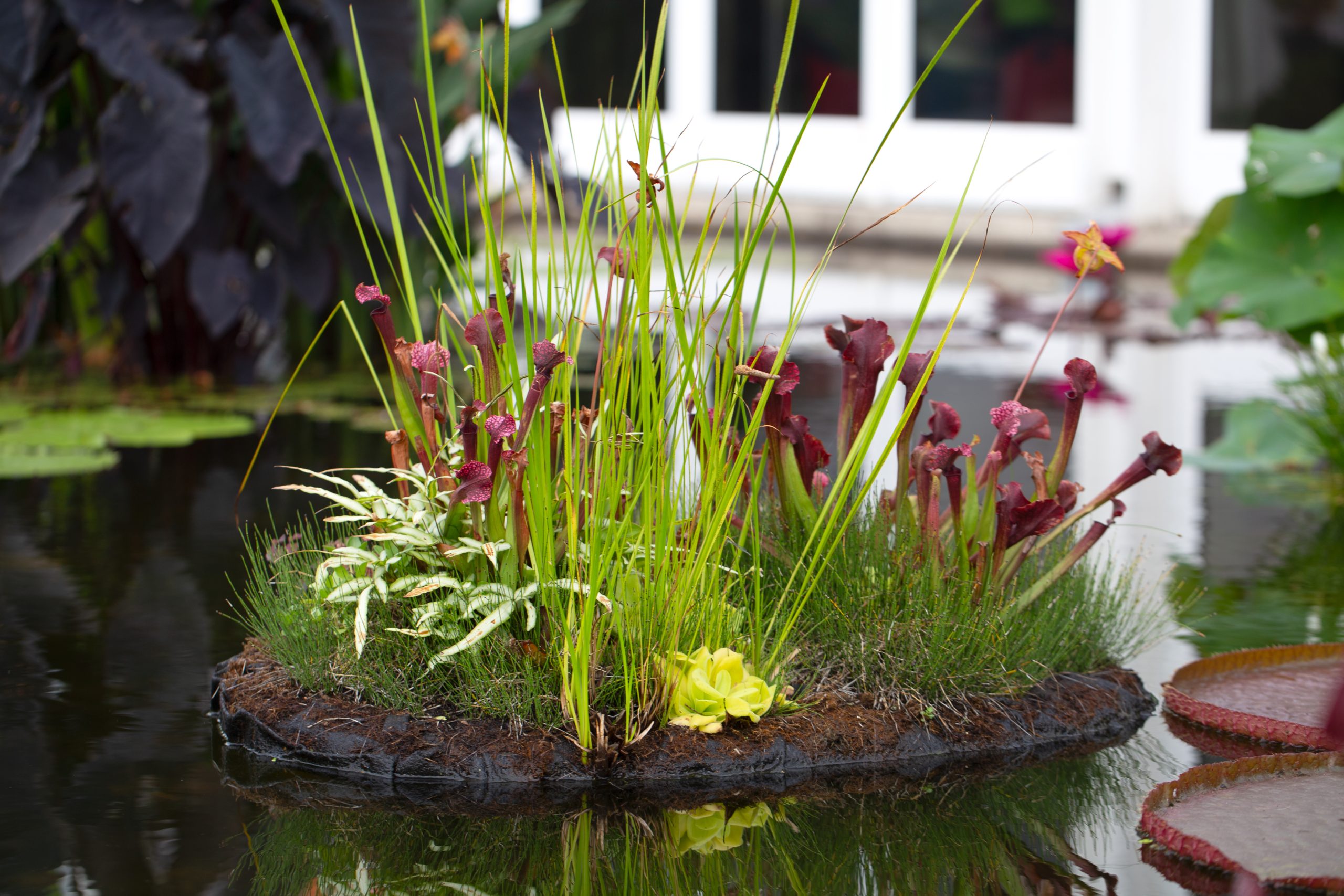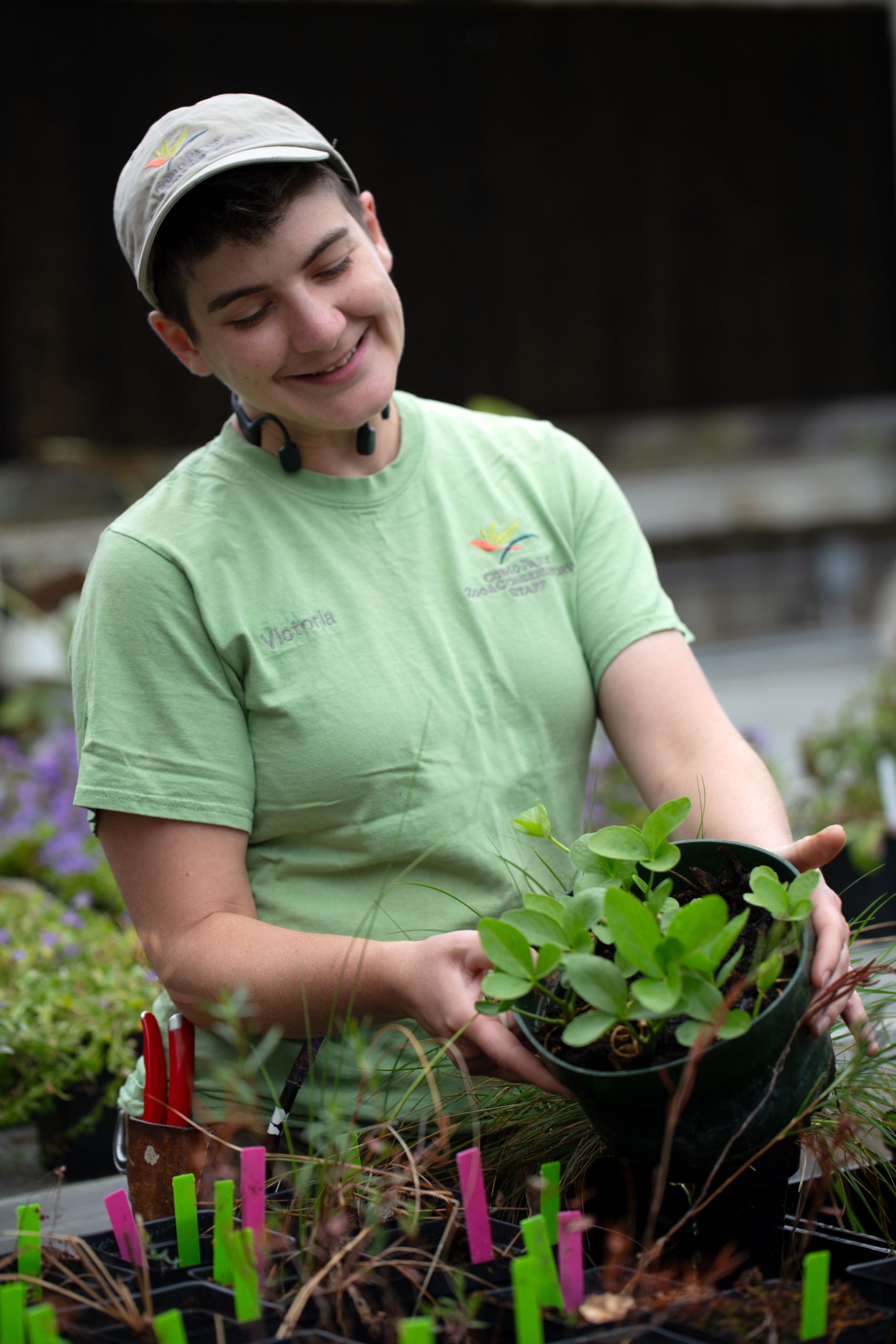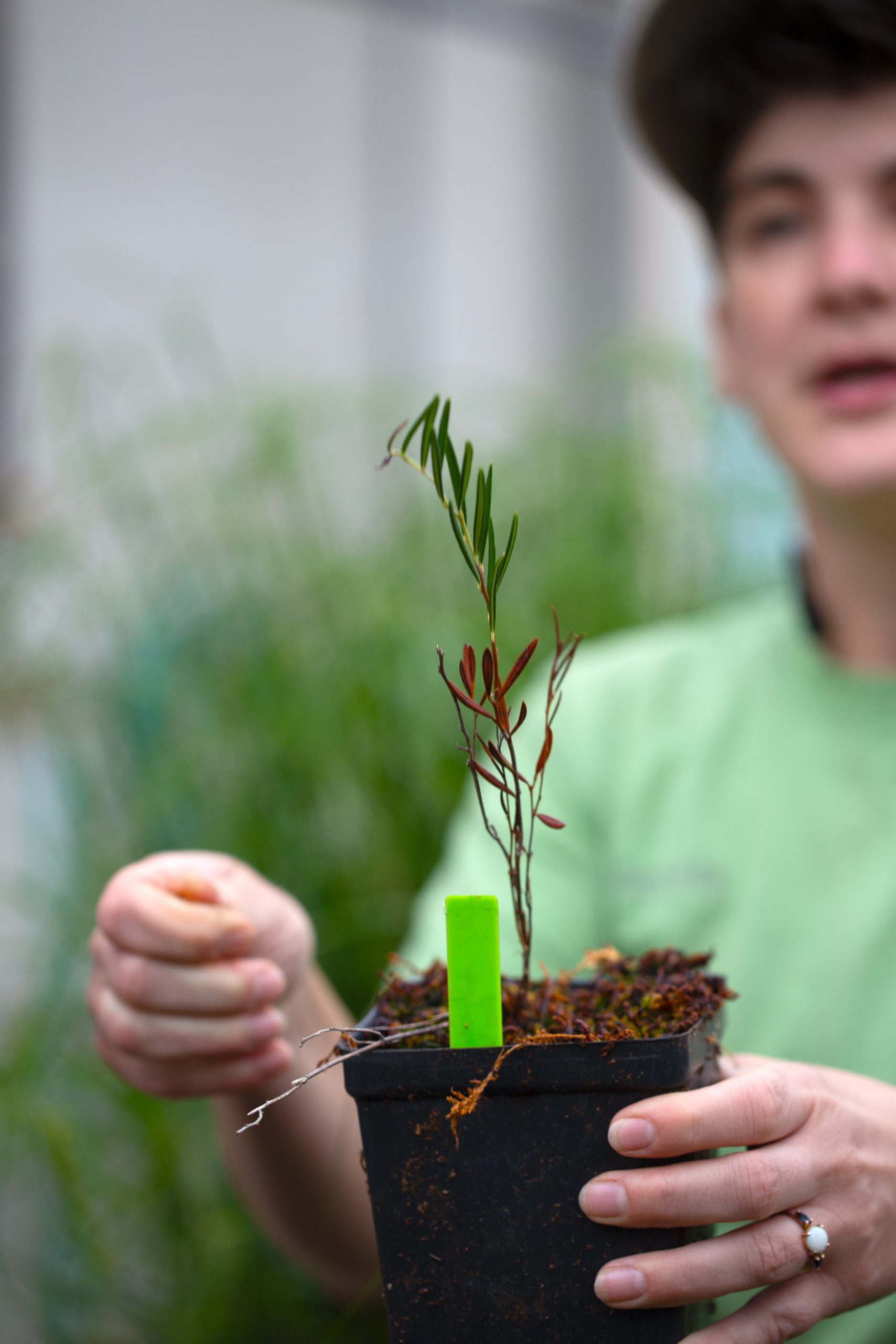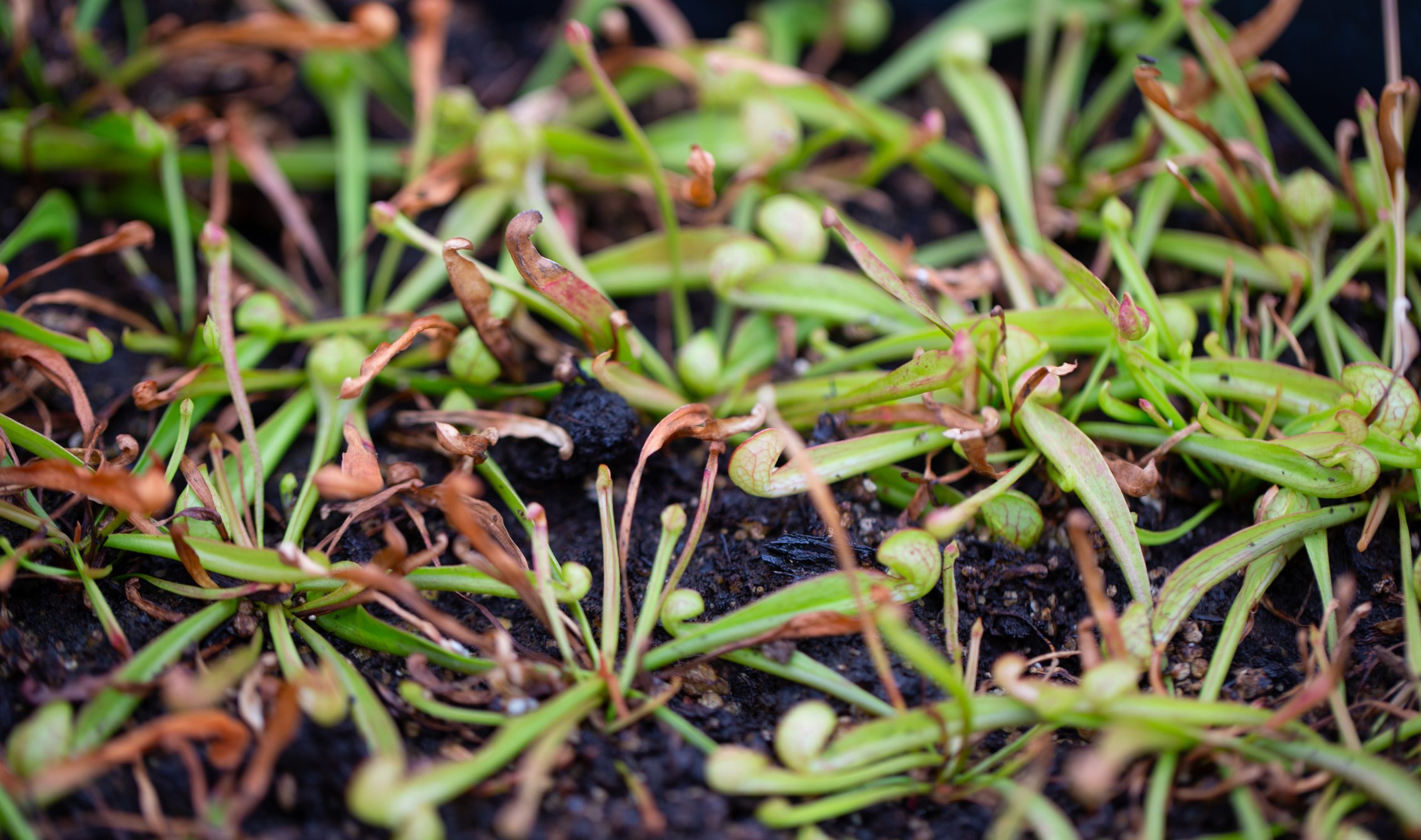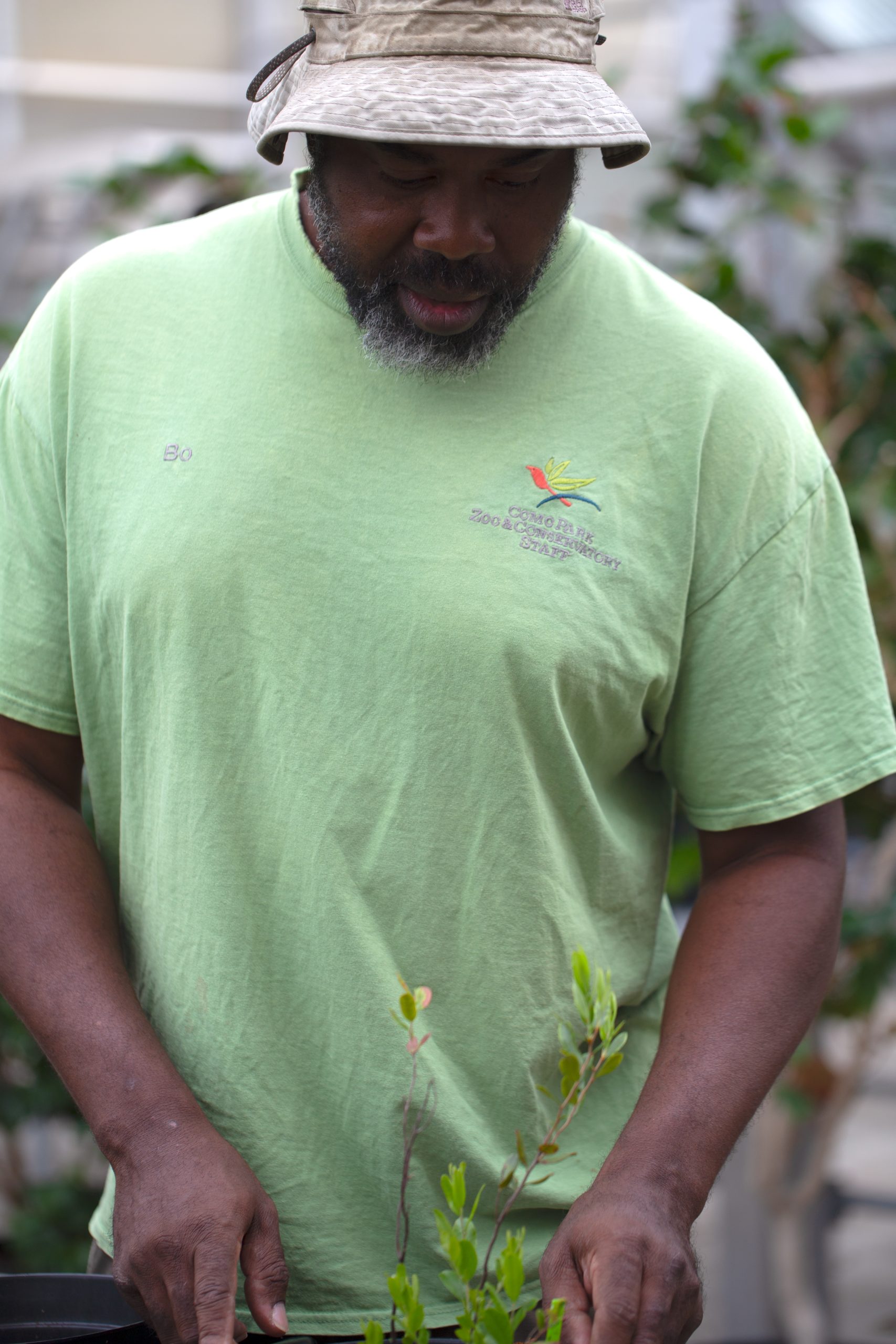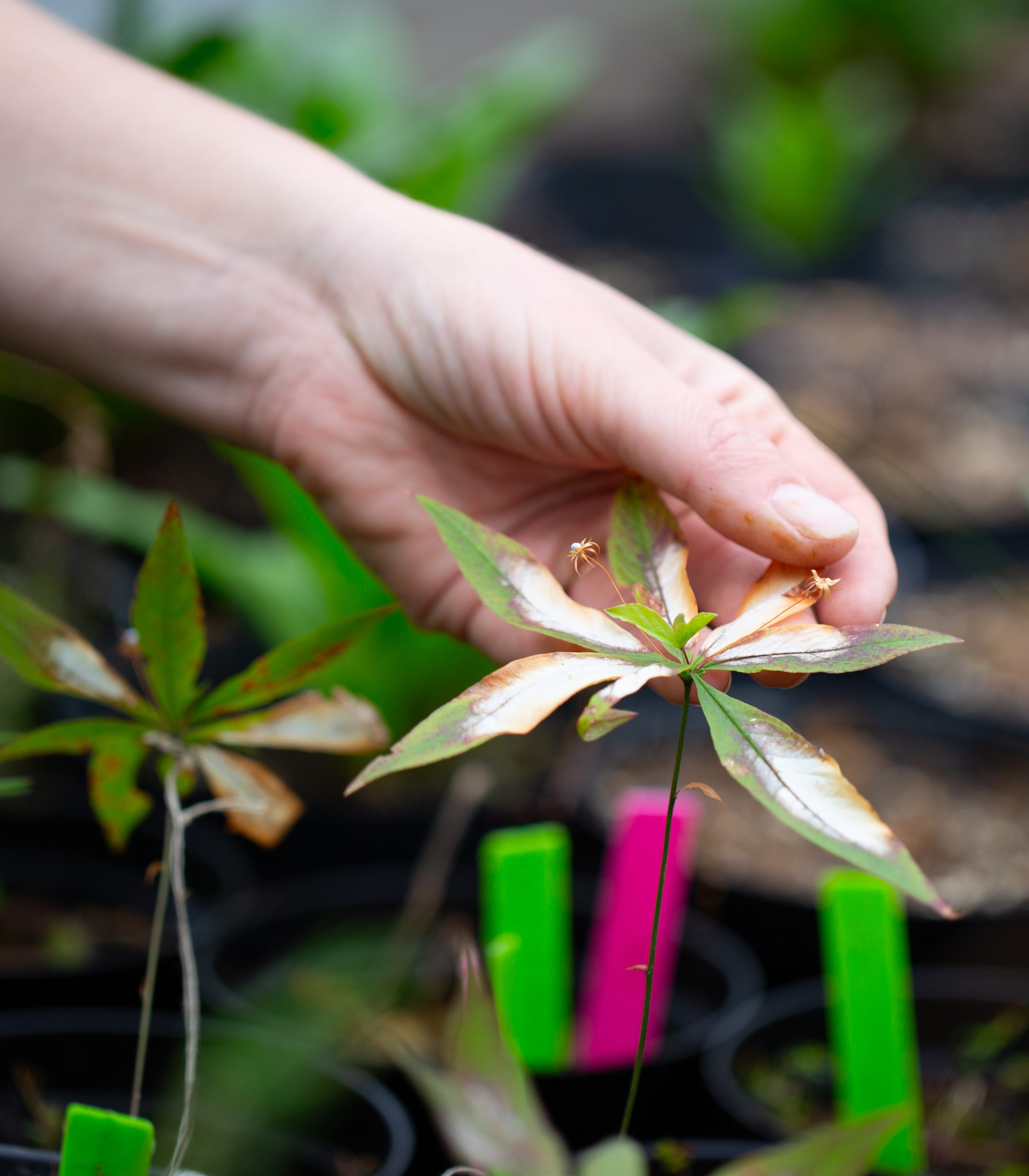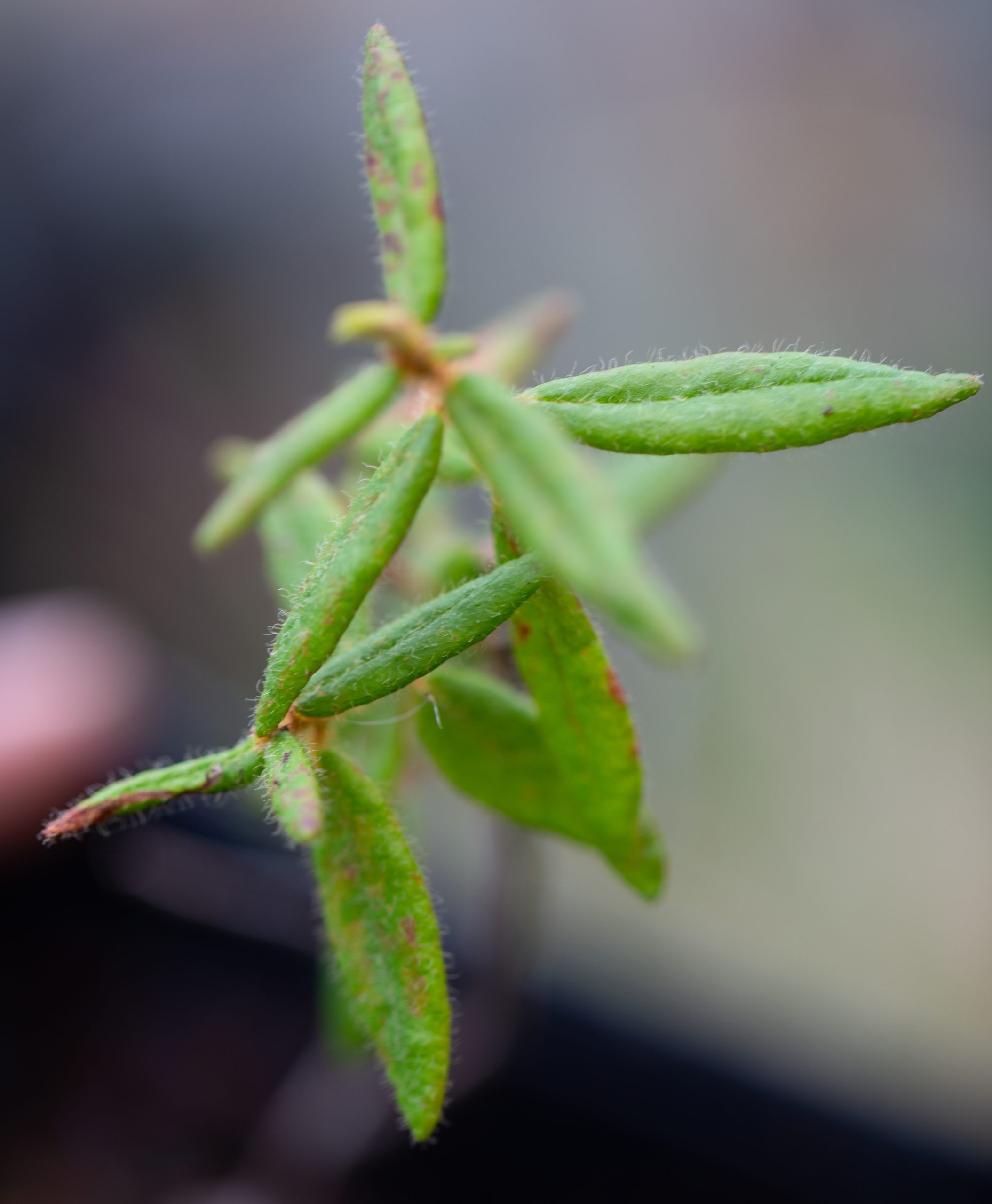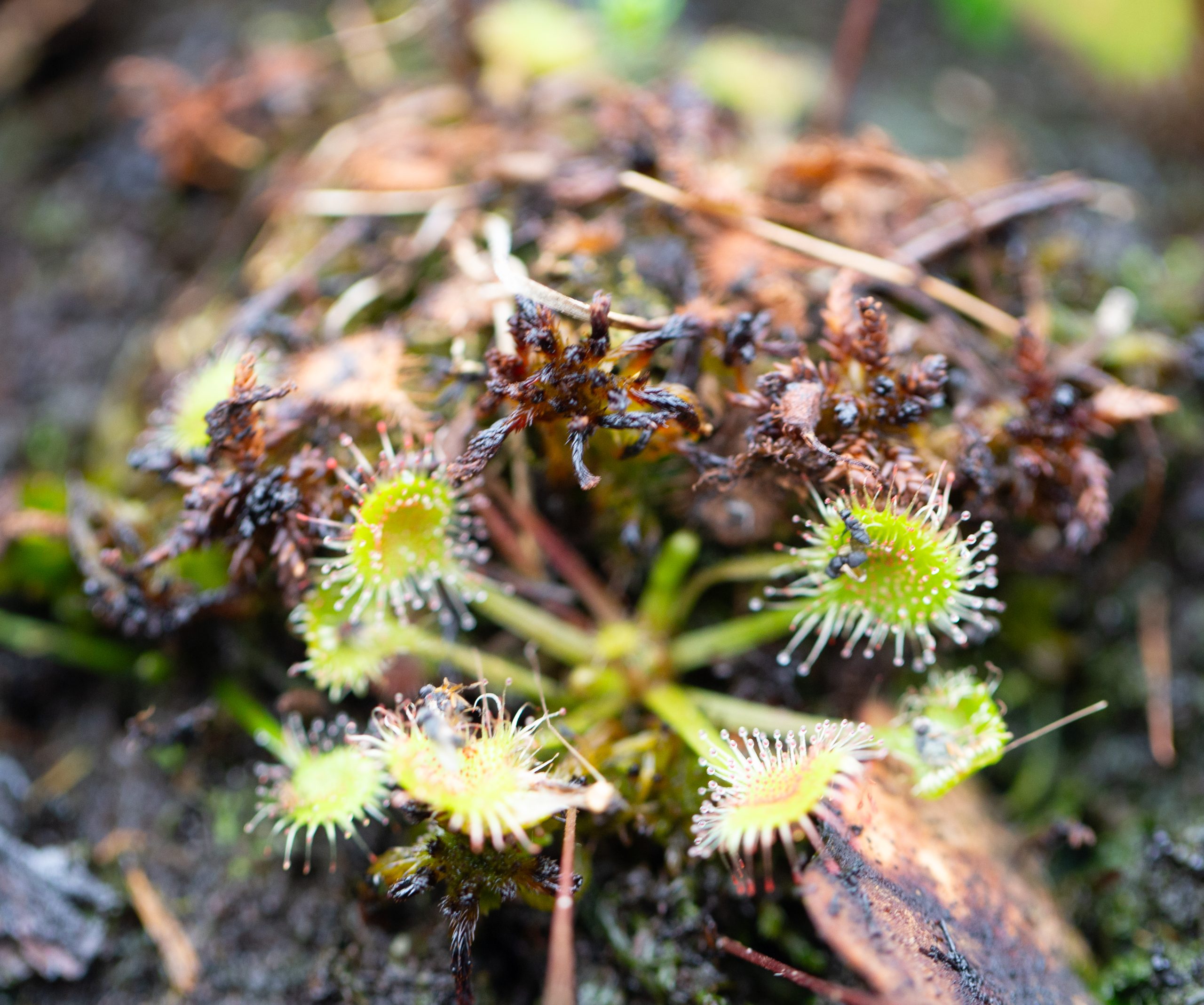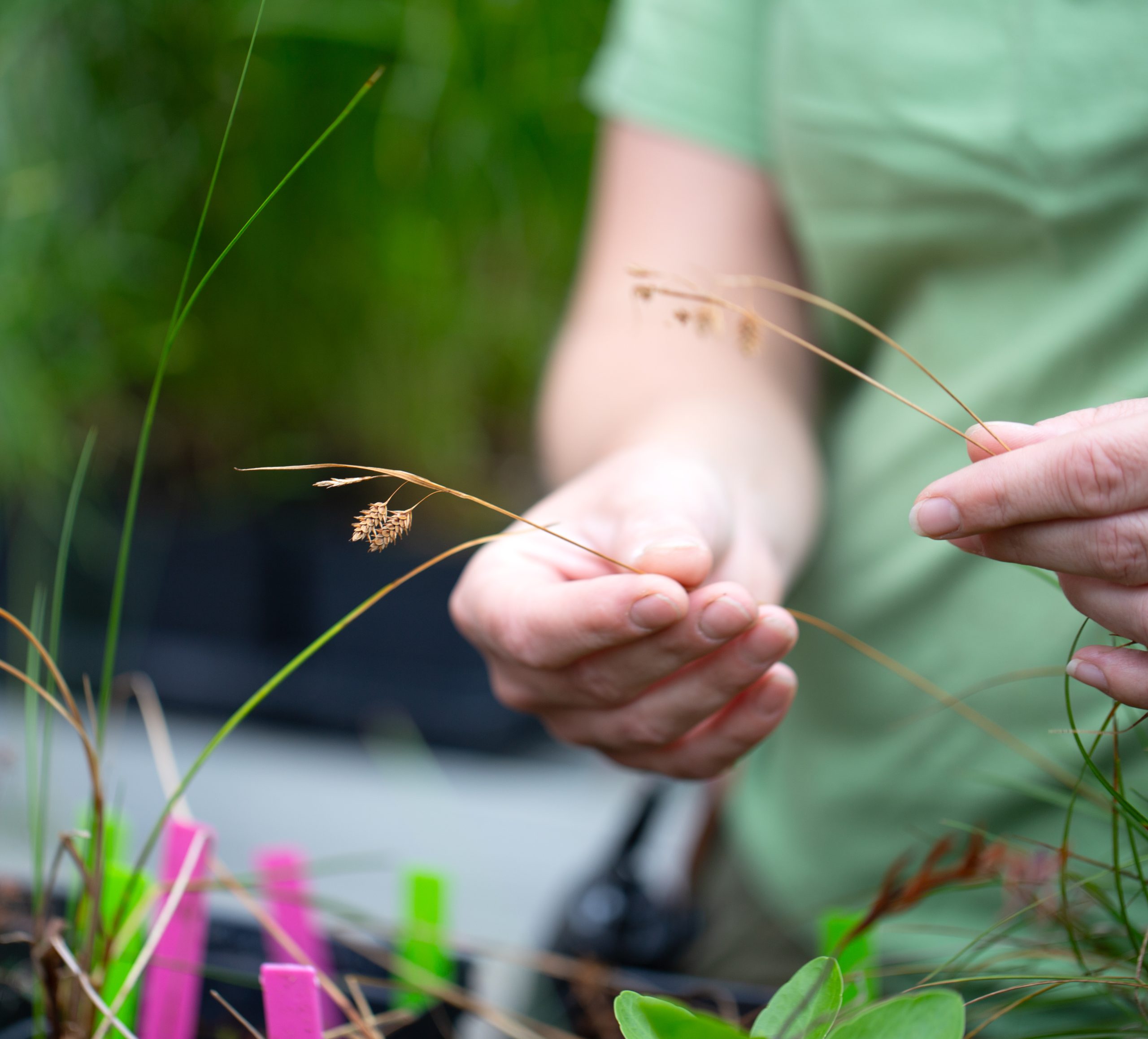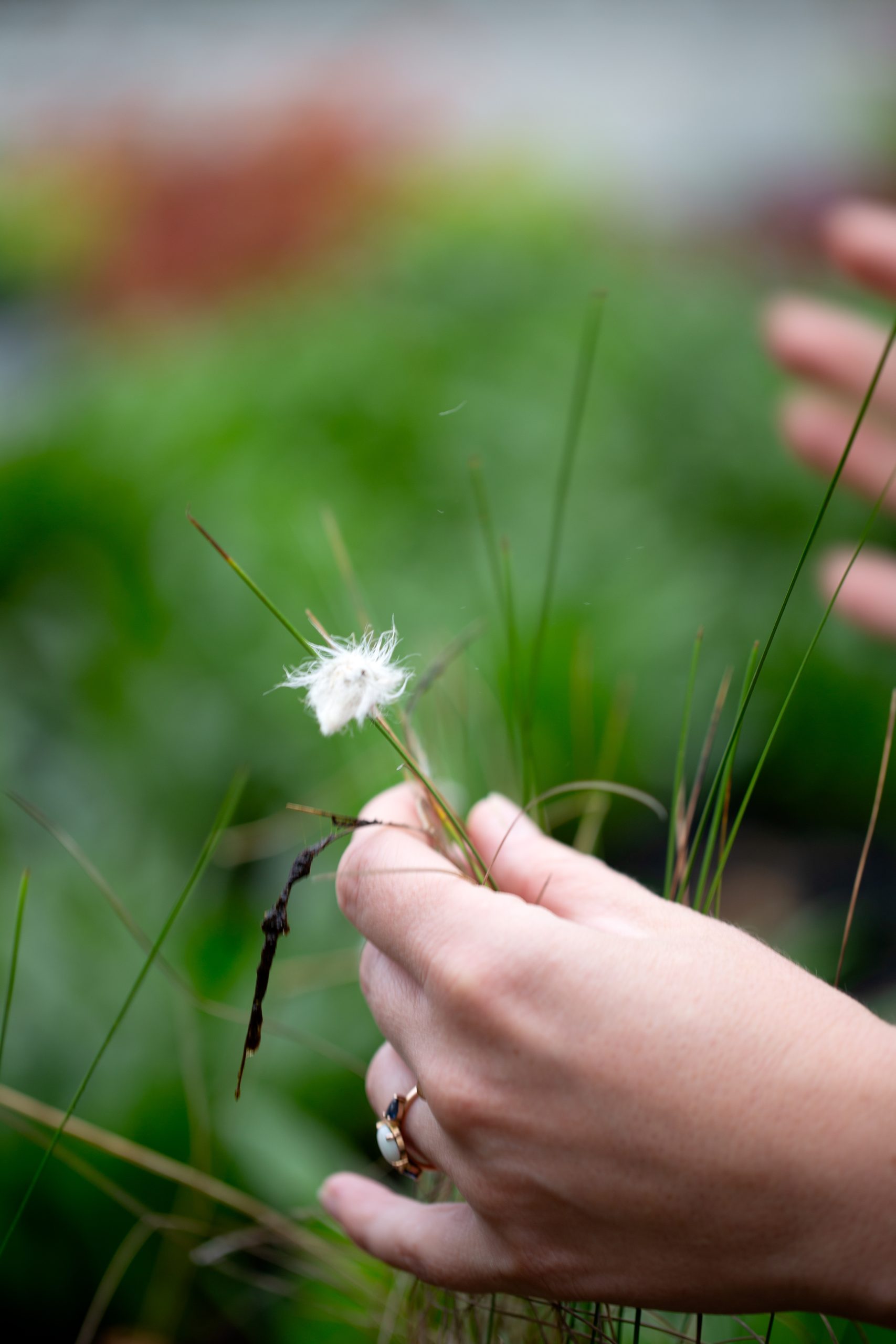With help from a Conservation Champions grant, Como horticulturists are calling attention to one of Minnesota’s most valuable and vulnerable ecosystems.
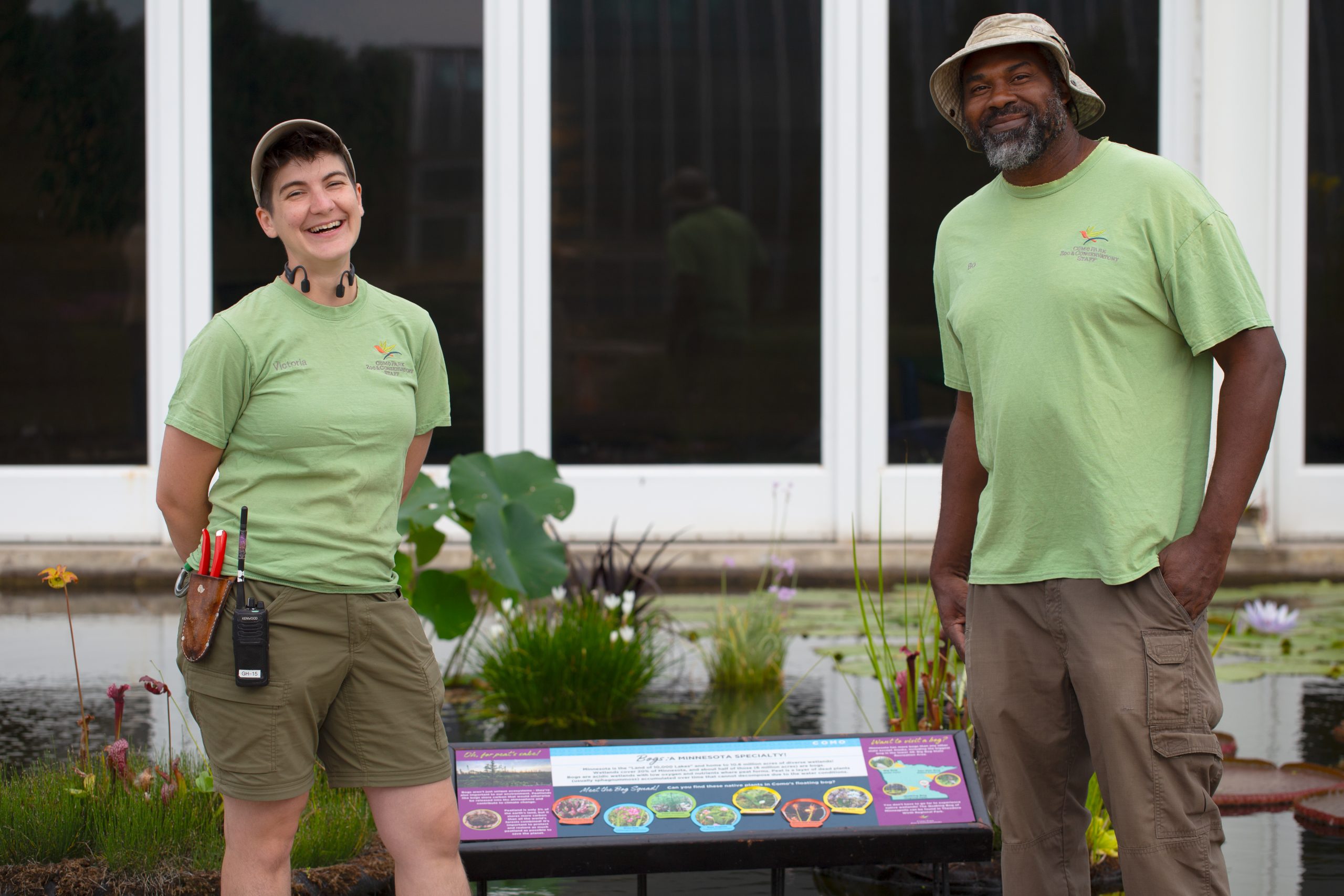
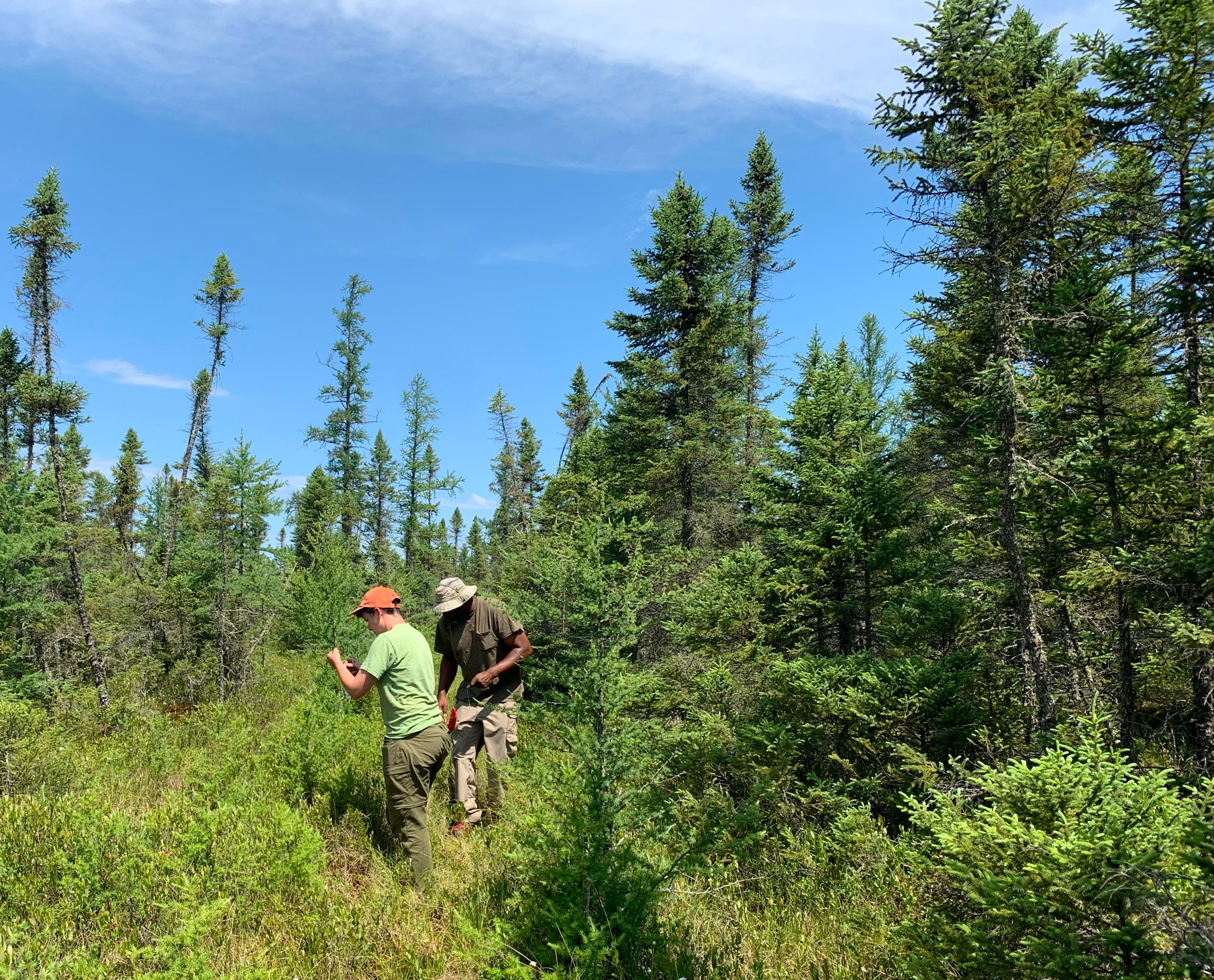
With its glossy leaves and deep red and purple coloring, the pitcher plant is one of Minnesota’s most captivating natives. So captivating, in fact, that when insects are drawn into its invitingly vase-like body, they soon discover there’s no way out. Tiny, down-drafting hairs inside the plant make it impossible for prey to find purchase before being drowned and digested by this carnivorous plant.
Native to Minnesota’s peatlands, pitcher plants are just one of the fascinating featured players in a trio of “mini bogs” floating this season in the Marjorie McNeely Conservatory’s Water Gardens. Created by Como horticulturists Bo Akinkuotu and Victoria Housewright, these miniature peatlands—and new interpretive signage nearby—are part of a larger Como Friends’ Conservation Champions project designed to call attention to the beauty, diversity, and environmental benefits of the region’s expansive bogs.
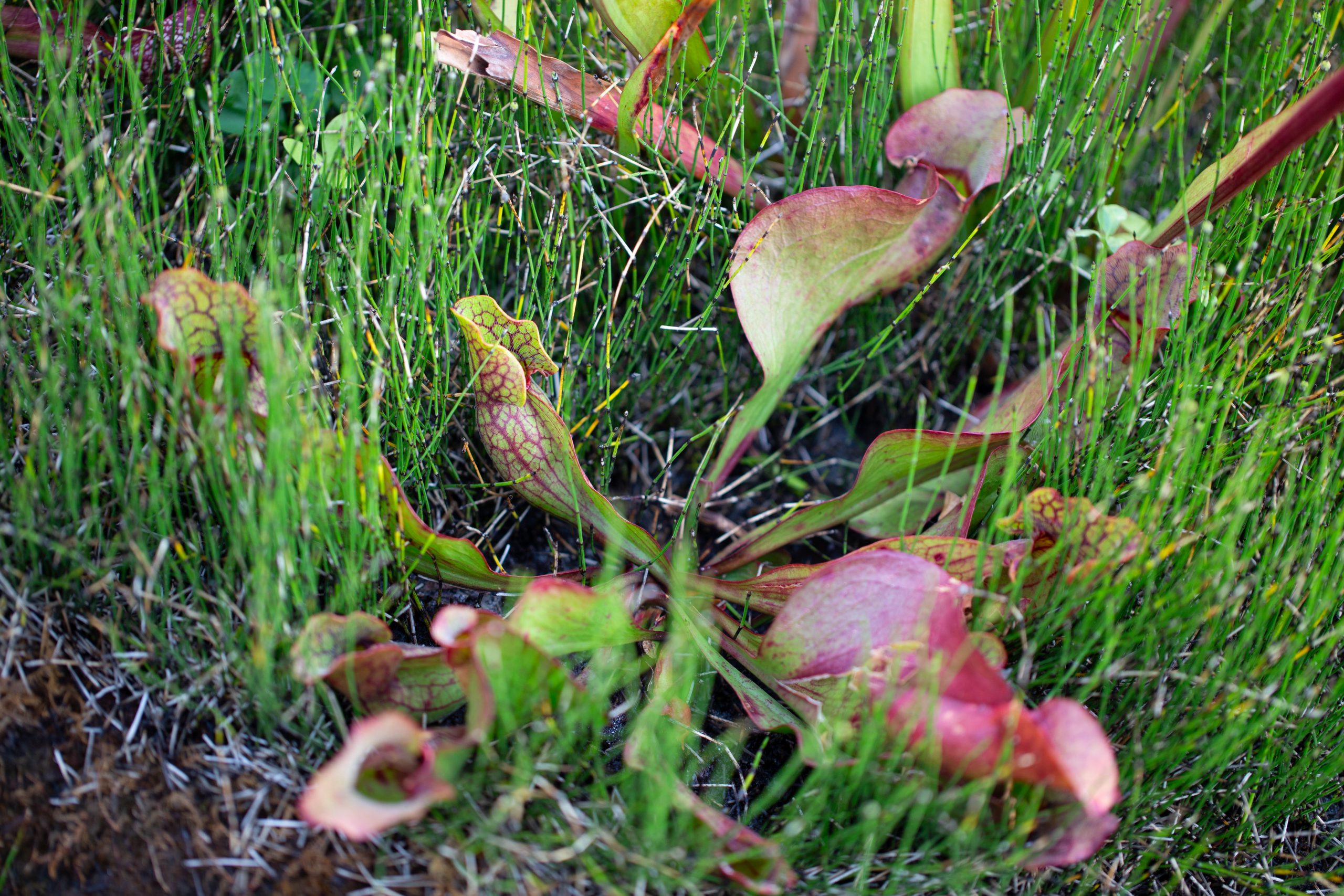
“Minnesota actually has more bogland than any state outside of Alaska, covering nearly six million acres,” says Housewright. Forged more than 10,000 years ago with the retreat of the last glaciers, these swampy wetlands are “so acidic that plant matter can’t decompose, and instead, builds and builds over time, creating layers and layers of peat. After thousands of years, bogs now capture twice as much carbon as all the world’s forests, but if we lose them, it would be like a carbon bomb going off. That’s why it’s so important that we conserve them.”
A Growing Partnership
One of the best places to see this unique ecosystem is in northern Minnesota’s Sax-Zim Bog, a three-hundred square mile peatland about an hour’s drive northwest of Duluth. Well known to birders who flock there to see northern owls, warblers, finches, and other boreal birds, the bog is just as impressive for its diverse plant life, which includes more than 750 species of wildflowers and terrestrial plants, trees, shrubs, grasses, mosses, and ferns.
“Bogs are having a moment and this is definitely one to see, so we came up with the idea of building a partnership with the Friends of the Sax-Zim Bog, a support organization like Como Friends,” says Housewright. Together, Housewright and Akinkuotu wrote a Conservation Champions request proposing a donation to help the organization buy additional land to conserve, as well as the opportunity to bring home a sampling of the bog’s most interesting plants to expand Como’s educational collections. “We wanted it to be a partnership. They’re the ones with the expertise and resources to protect and preserve the bog,” she says, “and here at Como we have nearly two million annual visitors that we can help get excited not just about this incredible ecosystem, but also about why conserving bogs matters so much for climate change.”
All Sax-Zim Bog photographs taken by Naturalist Kelly Beaster
Wild Collecting for Como
In June, the pair traveled north to work with a naturalist at Sax-Zim Bog who helped them to identify and wild collect some of the peatland’s most notable species, like pitcher plants and sundews, leatherleaf and bog bean, pink lady’s slippers and heart-leaved twayblade. To minimize impact on other plants, the pair took only tiny samples and cuttings. “You can’t really dig in an environment as soggy as that—instead you’re just gently untangling roots from one plant to the next,” Akinkuotu explains.
The team took home nearly 60 individual plants that are now taking root behind the scenes in Como’s 30,000-square-foot greenhouse. Once established, Akinkuotu says he’s looking forward to incorporating more of these bog beauties beyond the Water Garden, where the “mini bogs” have already been a big hit with visitors—and with volunteer ducks who’ve been caught nestling in the moss, grasses, and pitcher plants.
“Even at this scale, you can see these mini bogs creating their own little biomes. We come out here to care for them every day and discover new spiders that have started webbing, more and more bugs that are attracted to these plants, and little tadpoles and frogs that will actually move in,” he says. “By bringing a little more attention to the Sax-Zim Bog, we want people to see how special these places are—and to know that conservation isn’t just something that happens far away. It’s right here at home.”
Bog plants in order of appearance: bog bean, bog rosemary, pitcher plant, bog laurel, star flower, Labrador tea, sundew, lantern sedge, cotton grass
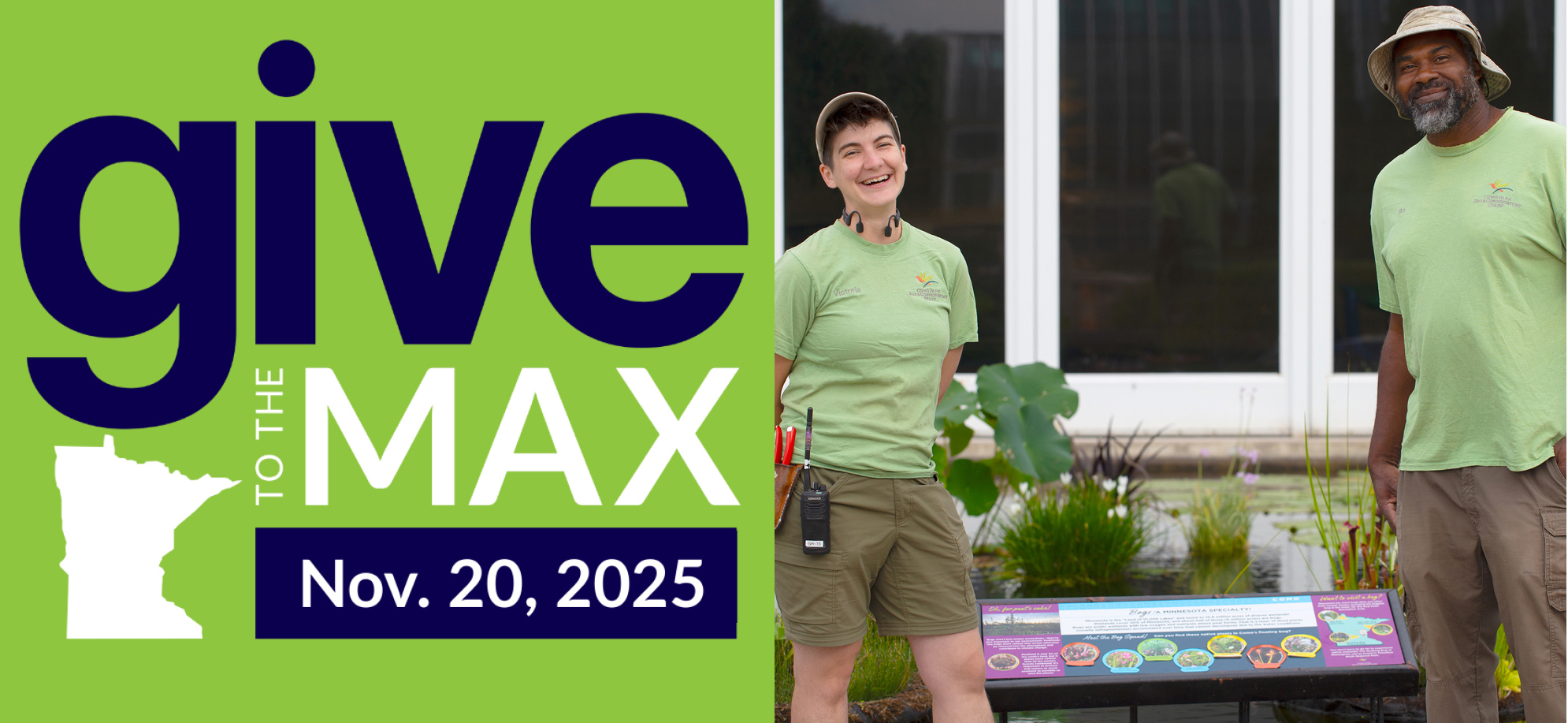
Your support for Como Friends helps support conservation projects at home and around the world through Conservation Champions, a competitive microgrant program for Como’s professional zookeepers, horticulturists, education specialists, and interpretive staff. Give to the Max for Como Park Zoo & Conservatory! Thanks to generous matching gifts from Como Friends’ Board of Directors and long-time Como Friends supporters Sandy and Dean, every gift you make to Minnesota’s most visited cultural destination will be doubled, dollar for dollar, up to $52,500. Thank you!
